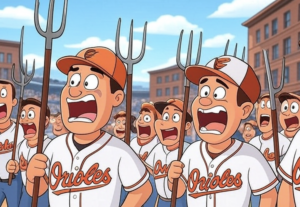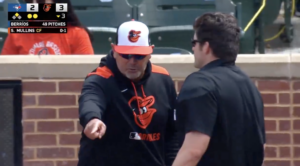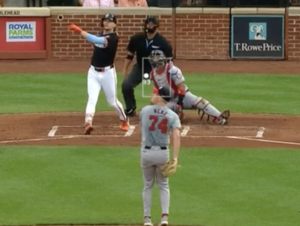Baseball, at its core, is a beautiful game with an offensive fabric woven from the threads of two competing philosophies – the classic “SmallBall” and the progressive sabermetric mindset of “Maximizing runs per out.”
The “Small Ball” philosophy is essentially an approach that emphasizes speed, precision, and execution over power, but at higher risks. It involves strategies such as hit-and-run, stealing bases, bunting, and hitting for contact to move runners along the base paths and eke out runs. This approach values finesse as a strategy, seeing baseball as a game of inches that can be won by patiently advancing runners and capitalizing on opponents’ mistakes.
Contrastingly, the philosophy of Maximizing Runs per Out takes a more analytical approach. It revolves around the notion that outs are finite in a game, and thus, every at-bat should be optimized to score as many runs as possible. This translates to focusing on walks, extra-base hits, and home runs – activities that provide opportunities for the most runs per out while reducing or even eliminating the risk of incurring outs on the basepaths.
Integral to this philosophy is a concept known as the “True Three Outcomes.” The theory stipulates that the three fundamental outcomes of any at-bat that are fully under the control of the batter are the walk, the strikeout, and the home run. Among these, walks are baseball’s true secret weapon. They are often overlooked, and while not as glorious or as valuable as home runs, they’re far more common and carry with them the same amount of risk: zero. Walks can be incredibly effective at forcing up the pitch count, increasing pressure and fatigue on pitchers, and boosting home runs and extra-base hits, all while advancing base runners without the risk of an out. Walks are a bit of a cheat code.
These ideas around maximizing runs per out may be a fairly new analytical approach for some, but they certainly aren’t new to the Baltimore Orioles’ franchise. Legendary manager Earl Weaver doesn’t get enough credit in the conversation around baseball’s analytical revolution. Known for his literal in your face approach and straightforward wisdom, the Earl of Baltimore was ahead of his time as his intuitive ideas resonated with the underpinnings of a data-driven approach to baseball strategy. At the heart of his philosophy was an unwavering belief in this progressive concept of maximizing runs per out (think Earl Weaver special). Weaver knew the value in efficiency, minimizing risk, and harnessing the power of an edge long before it was cool.
(Don’t believe me? Check out Earl’s book.)
In the spirit of Earl, we should start looking at in-game baseball strategy in terms of “what do I win if I win, and what does it cost?” It’s essentially a cost-benefit analysis for every decision made on the field. The goal, as always, is scoring runs. However, the risk or cost involved is getting outs. The higher the risk of an out, the higher the potential reward must be to justify it.
A great example is the sacrifice bunt. An ancient staple in baseball strategy, the sac bunt moves a runner up a base, but at the cost of an out. Here, if successful, you win base advancement, a mere 90 feet, and you pay the cost of one of your precious, finite outs. If unsuccessful, you lose both advancement and the out, and sometimes two outs. A crazy amount of risk without the hope of a corresponding return. Without the assurance of a run, this play becomes a costly strategy, and that’s why, in general, sacrifice bunts are far more often than not, bad decisions.
As Weaver instinctively knew, most tenets of small ball tactics usually carry with them too much risk to regularly be optimal, especially ones that outright cost a team their outs. Conversely, plate discipline and power bring big rewards without elevated risks, but are much harder to master. However, recent rule changes in baseball that favor the Small Ball approach; larger bases, pitch clocks, and new pitcher disengagement rules make it easier to incrementally advance runners, while defensive shift limitations could make way for more baserunners and more extra base hits.
Simply said, today’s baseball calls for a dynamic approach. Teams have to rely on blending individual player strengths and specific scenarios to deploy different strategies at appropriate times. The Orioles have done a good job of keeping this in mind as they have meticulously acquired a barrage of switch and left-handed power, continued to prioritize slugging and on base percentage, and shown little hesitation to deploy speed on the base paths. A continued and refined understanding of the value of blending these strategies and employing them judiciously according to the game situation will be crucial to their continued success.
In conclusion, good baseball philosophy is as much about timing and strategy as it is about physical skill. Understanding these competing philosophies and using them wisely can make the difference between a championship team “on paper” and one on the field. So as you watch, look for the games within the game. Look for the matchups that give you an edge on risk in evolving scenarios, even if they seem unconventional. Think like Earl. Walk with the bases loaded, don’t give away a single out, and for the love of God don’t bunt. Hit a three-run homer instead.









